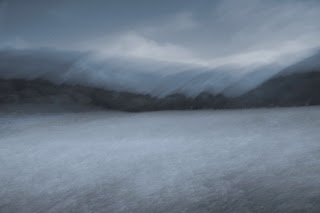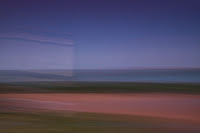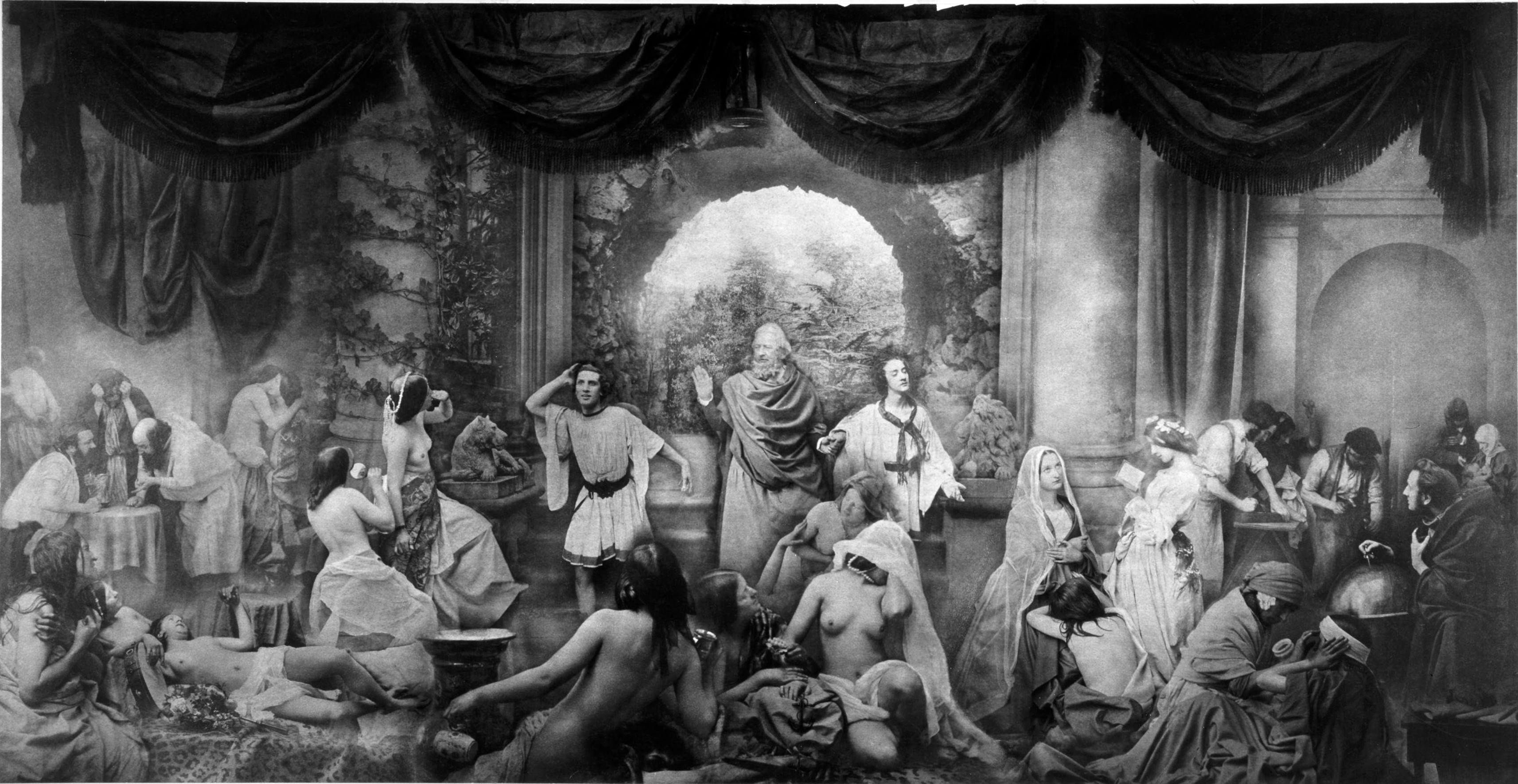For this unit I set out to do abstract landscape photography. I know most people like landscape photography but when it comes to abstract, people either don't like it or don't understand it. Abstract doesn't really fit in within the norms and genres of what has generally been widely accepted as representational photography. Abstract can be a bit difficult to define or interpret, as you can't easily identify any shapes or objects. Whether it's human or animal form, or if it's a cityscape or seascape - there can be a level of mystery and ambiguity surrounding them. I think as humans it's not in our nature to accept anything different, anything that we don't understand or cannot explain in our head.
I've always had this fascination with abstract images, but I think I really fell in love with it after seeing the stunning pieces of work produced by Chris Friel. I like the fact that most abstracts blur the line between paintings and photographs and plays with your imagination. During my research I noticed abstract falls within the fine art category - this has a broad definition and has traditionally defined many art forms such as paintings, sculpture, music and poetry. Fine art has been appreciated for its aesthetic and imaginative qualities. There was a time when fine art was synonymous with good taste. Researching for this unit led me to believe there's still a market and audience for this type of work, otherwise, why would so many photographers dedicate such tremendous amount of time, energy and commitment to such an art form?
For this unit my main aim was to produce a series of ten images which were visually stimulating whilst eliciting some sort of emotional response from the viewers. I planned to initially visit New Brighton to try and get some abstract seascape. On the way to New Brighton from the motorway I noticed this amazing sea of yellow - a field full of golden yellow rapeseed. I immediately decided to get off at the next exit to capture this stunning scenery.
Armed with my Canon 500D, and 17-55mm, 2.8 lens I pulled over to the side of the road next to the rapeseed field, in Helsby. As I was walked near the field I saw a bit of an opening where I could position myself to take the photographs. I had my ND 4, 6 and 8 on as well as the graduated grey filter. Setting the camera to f22, 1 second shutter speed and ISO 100 I took my first photograph. This image didn't quite look like this in camera as the filters let in a lot of light which made the images look reddy/purple. It's only when I adjusted the white balance, colour temperature and camera calibration setting was I able to bring out the true colours. I also adjusted the contrast, clarity and vibrance only very slightly to bring out the tones and texture. I also straightened this ever so slightly as it was tilting a little bit from one side. I had to perform almost the same basic adjustments in camera raw for all the images but didn't want to manipulate them too much as I wanted to limit the manipulation to in-camera rather than PS. Having said that, most of the images suffered from heavy vignetting due to having three different filters on the lens. In order to rectify that I had to do some cloning around the corners.
Armed with my Canon 500D, and 17-55mm, 2.8 lens I pulled over to the side of the road next to the rapeseed field, in Helsby. As I was walked near the field I saw a bit of an opening where I could position myself to take the photographs. I had my ND 4, 6 and 8 on as well as the graduated grey filter. Setting the camera to f22, 1 second shutter speed and ISO 100 I took my first photograph. This image didn't quite look like this in camera as the filters let in a lot of light which made the images look reddy/purple. It's only when I adjusted the white balance, colour temperature and camera calibration setting was I able to bring out the true colours. I also adjusted the contrast, clarity and vibrance only very slightly to bring out the tones and texture. I also straightened this ever so slightly as it was tilting a little bit from one side. I had to perform almost the same basic adjustments in camera raw for all the images but didn't want to manipulate them too much as I wanted to limit the manipulation to in-camera rather than PS. Having said that, most of the images suffered from heavy vignetting due to having three different filters on the lens. In order to rectify that I had to do some cloning around the corners.
This is my first entry to my final ten. I really love this image for many reasons. As I have a thing about straight lines, this image came out with perfect symmetry and fits really well into my fondness linear arrangements. I like the way I managed to capture the cocktail of colours ranging from the green grass to the yellow rapeseed finishing off at the horizon of blue/purple sky. It could have been improved a little if I could have made the sky look blue, but it was difficult to do without the rest of the image being affected.
 My second favourite image is from the same place. This time I tried to move away from the traditional vertical and horizontal lines you associate with these types of images and ended up with something that looked very much like a big wave. There's a simplicity about this image but if you look closely there's a quiet storm taking place within the image - it could almost be in some sort of turmoil. I can easily see these two images hanging up on a gallery wall or in someones home as a piece of art work. In my opinion these two images are technically the strongest. I increased the shutter speed to 1.6 seconds on this but kept the rest of the settings the same.
My second favourite image is from the same place. This time I tried to move away from the traditional vertical and horizontal lines you associate with these types of images and ended up with something that looked very much like a big wave. There's a simplicity about this image but if you look closely there's a quiet storm taking place within the image - it could almost be in some sort of turmoil. I can easily see these two images hanging up on a gallery wall or in someones home as a piece of art work. In my opinion these two images are technically the strongest. I increased the shutter speed to 1.6 seconds on this but kept the rest of the settings the same. My third image was also from Helsby but one I rejected because I didn't think it fitted in with the the other two. Although the black and white tones works well on this image and I like the way the clouds looks like crashing waves, I think it doesn't fit in because of the conversion. It's still a good image in its own merit and has a lovely feel to it. I used the same camera setting as the other images but just varied the movement.
My third image was also from Helsby but one I rejected because I didn't think it fitted in with the the other two. Although the black and white tones works well on this image and I like the way the clouds looks like crashing waves, I think it doesn't fit in because of the conversion. It's still a good image in its own merit and has a lovely feel to it. I used the same camera setting as the other images but just varied the movement. 

The following two images are from New Brighton and almost made it into the final ten. However, I rejected these because they don't look abstract enough to me. The images are not technically that bad but when I think of abstract, I don't want to immediately recognise what the actual image is. I want to spend time trying to work it out, whereas with these you can easily tell what the scene is. One of them showing the lighthouse and the other a row of houses. I think because there's no mystery around them they don't grab my attention.

Following on from my trip to New Brighton, I decided I wanted to add more variety of colours, textures and tones to my images. I didn't want them all to be too similar so I went off to Tatton Park, knowing there was an abundance of colour in their flower gardens. Luckily it was a bright sunny day and I had the whole day to take as many photographs I needed to. I varied the setting on this slightly to f14 and 4 seconds shutter speed. I've been wanting to photograph bluebells but unfortunately I couldn't get to anywhere within the time-scale I had so I welcomed the opportunity when I saw a small bunch of bluebells in one of the Tatton Park gardens. On this image I tried to move the camera at a slightly upward motion to get that blowing in the wind effect. I think it's worked quite well, especially with the a nice mixture of purple and green. Unfortunately there's still bit of red showing on the top of the image but I think it somehow adds to it.
This is another of my favourite images and I like it because of the contrast of two colours and the the vibrancy of the shades of red and orange. It's almost like a rainbow of colours, changing in that order as they sweep across.
These two images have a similar feel to them as the movement was pretty much the same. The movement helps to enhance and accentuate the vertical lines whilst blending them in to one. I have seen quite a few images from my research that fits well into this style of photography.



All in all I feel I have produced a good set of images that work really well together as a series. I feel have achieved with this brief what I originally set out to do. There's no doubt they're not up to the standard of images produced by some of the photographers I researched, but I think it may come with time, if I dedicate enough time perfecting my skills. I also need the correct equipment such as filters and lenses to make sure I don't leave any room for something going wrong. I believe some of these images are good enough to be marketed on line to be sold as large size prints for people to hang up on their walls, as they do would suit most household decor. I could also market them to high street retailers as they often have large prints on their walls.






































